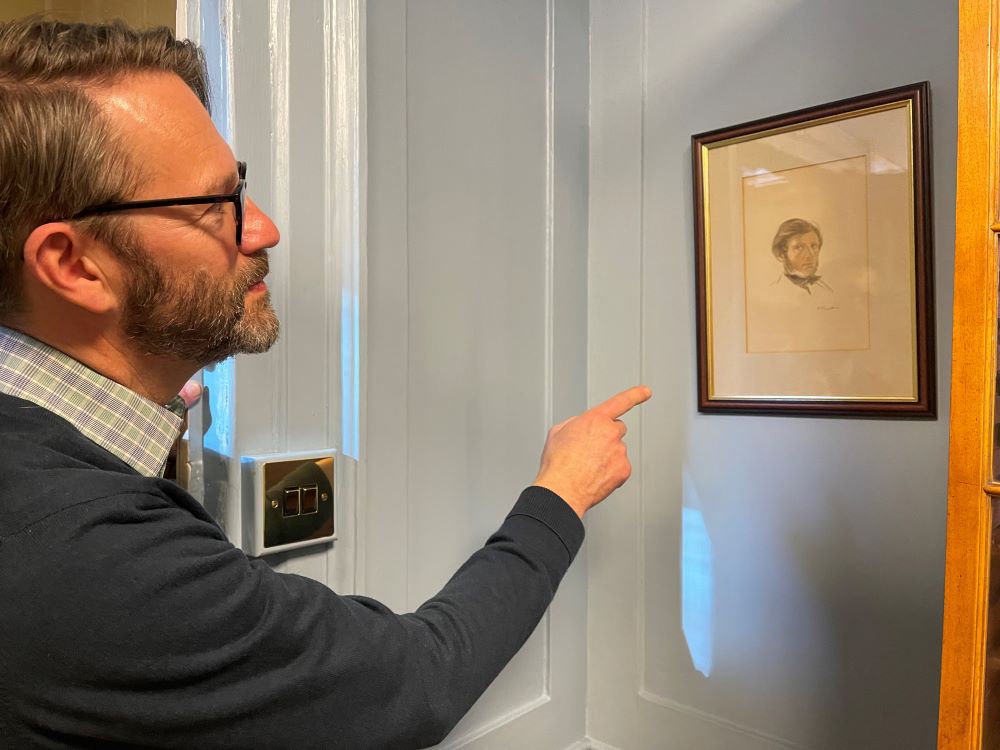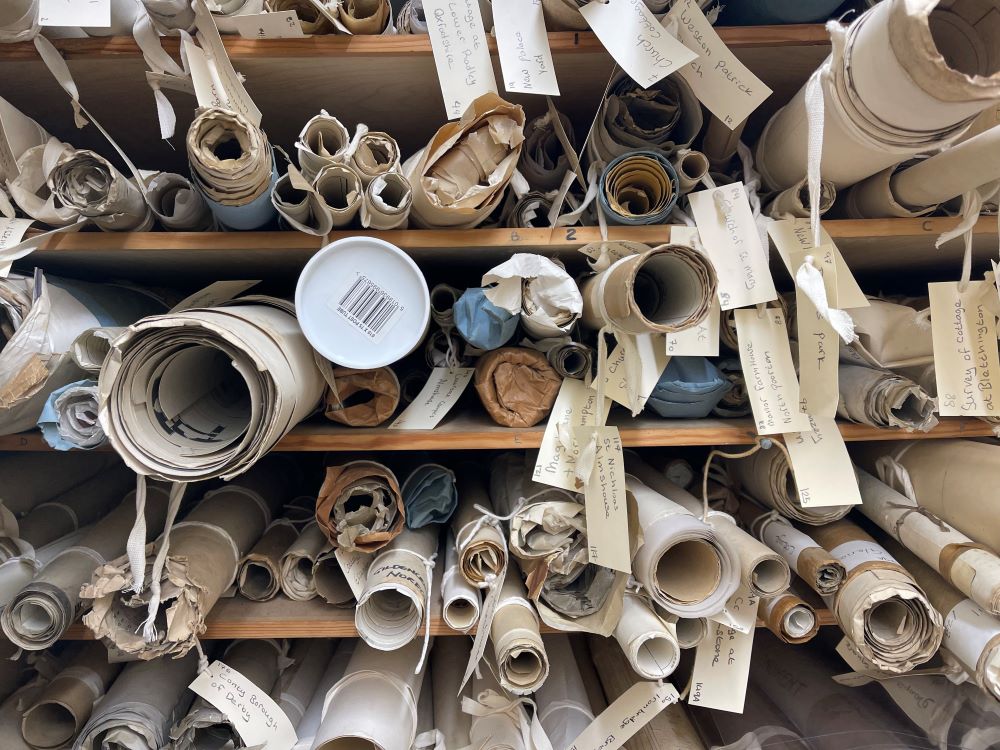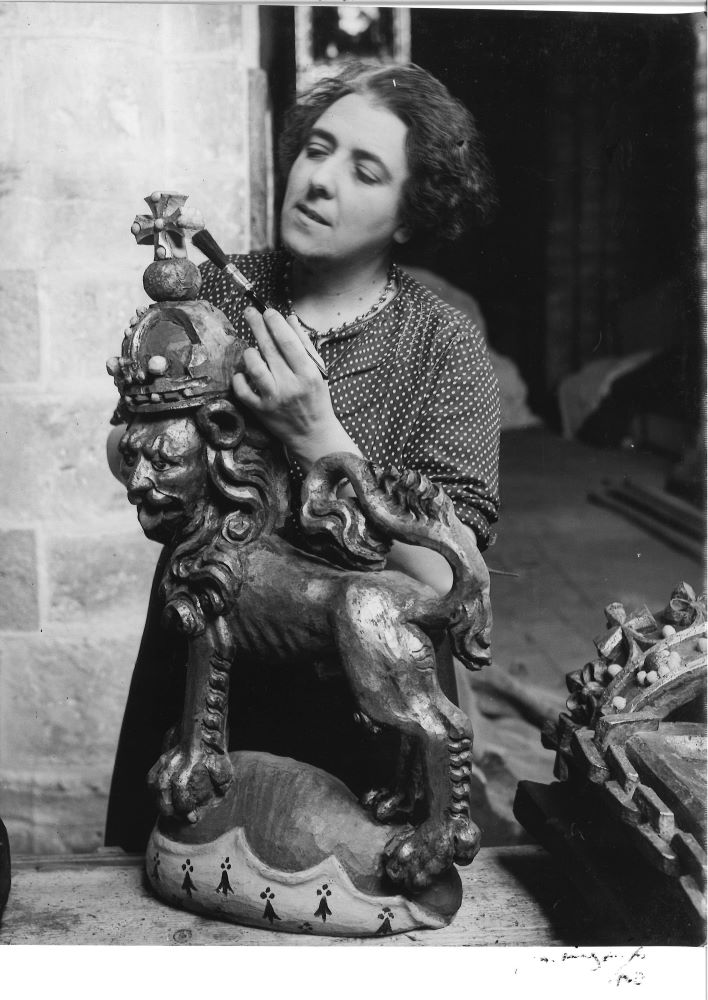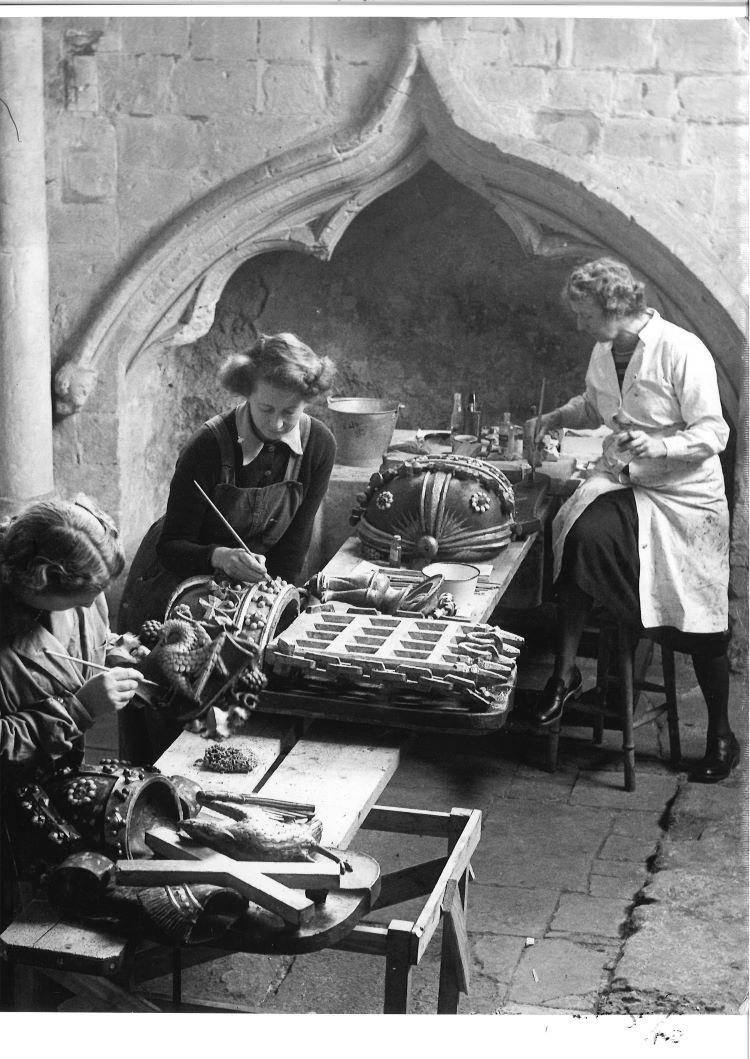In this new series, Icon’s CEO, Emma Jhita, talks to heritage leaders who are connected to conservation but have new and different perspectives to share with our membership.
Emma: Thank you for meeting with me at the SPAB’s home in Spital Square, London. It was your recent email about Janet Becker and early women in conservation that prompted me to get in touch. The thing that I really picked up from your message was the reference to ‘anti-scrape’. It's such a brilliant expression and, as I understand it, is at the core of the SPAB’s origins?
Matthew: Well, if we start at the beginning, it all stems from John Ruskin, who was a Victorian art historian and critic. While the SPAB way of thinking has developed into a really practical, hands-on fabric approach, a lot of it goes back to Ruskinian ideas about surfaces and beauty. And that's where the whole anti-scrape movement came from. In essence, it was a reaction to the Victorian tradition of drastic restoration of buildings, and churches in particular. When the SPAB was founded by William Morris and others in 1877, it valued buildings as a product of people over time, and the stories and information these buildings convey. So, Morris, along with other like-minded individuals, such as the architect and designer Philip Webb, decided to follow a different path to those of the previous generation.
Probably the best example of its time is the Churches Conservation Trust’s Inglesham Church. Rather than doing the standard Victorian restoration, Morris put his ‘money where his mouth was’ and insisted that a conservative, anti-scrape approach was adopted. It truly is the perfect conservator’s church, full of ancient surfaces including layer upon layer of wall paintings.

Matthew Slocombe, Director of the SPAB, with a picture of John Ruskin, a Victorian art historian and critic who inspired the Society's founders
Emma: : It really is a record through history of the contributions of different craftspeople and artisans who have been integral to the church’s fabric.
Matthew: Yes, it’s absolutely that. But it’s also that layered patination in itself – a beautiful thing in its own right – that really grabbed Morris.
Emma: So, if this was a reaction to the mainstream approach to the restoration of churches and other historic buildings in the 1870s, possibly earlier, how was this received by the regular church-going person in Victorian Britain?
Matthew: Oh, that's a good question and many of the answers to that are downstairs in our archive, where all the correspondence still lies from that period. It was often met with huge hostility. This was in a world where there is absolutely no notion of legislation to protect historic things. There are plenty of letters, particularly from clergymen, saying, ‘mind your own business, William Morris. Don’t tell us what to do. We have absolute control over the buildings under our management’. So, it was a real battle. If Morris hadn't been such a campaigner, it might never have gained traction.
Emma: Yes, Morris and his fellow SPAB founders were real pioneers of what we would see in contemporary life as advocacy and campaigning. They were incredibly brave.
Matthew: And angry! They were really upset and that drove them. You might even say they were arrogant, thinking they could tell people what to do without any kind of legislative backing. But that strength of feeling meant they were determined to change things and to secure the laws that would require a different approach.
Emma: Yes, which has carried through to the future with very direct lineage through the SPAB but also through legislation and our current approach and thinking around conservation and preservation.
Matthew: Yes, that’s so true. It would be lovely to draw it out, a kind of family tree of [buildings] conservation, with the SPAB as the starting point, and then all the other branches that lead elsewhere. Whether it's the Georgian Group as an offshoot, or the Victorian Society in the 1950s, or Icon and the Churches Conservation Trust. There are so many organisations that have a connection.
Emma: It's a lovely image, that sense of organic development from the SPAB’s early days. In terms of early examples of anti-scrape, and preventing what's referred to as ‘conjectural restoration’ of historic buildings, are there key examples you can give?
Matthew: In the earlier days, it was predominantly mediaeval buildings, but not exclusively. So, everything from Westminster Abbey downwards is featured very strongly in our archives. But what I really like about the SPAB is that, even in the early years, it was not exclusively about the big stuff. They were quite prepared to shout and stamp their feet over little buildings. The National Trust came to the SPAB in 1895/96, about a very simple vernacular building in Alfriston, East Sussex, which was the Trust’s first case. And it wasn't a grand country house or large castle, it was a farmhouse. The fact that the SPAB and, at that stage, the Trust, were interested in such things is really important.

Since it was founded in 1877, the SPAB has amassed a substantial archive of documents and images relating to the Society and its work
Emma: And regarding the SPAB Approach, would it be correct to describe that as being pure conservation of the fabric of a historic building?
Matthew: Largely, yes. Different approaches have emerged elsewhere in recent times and things like the ICOMOS Charters obviously have a broader range of criteria, which bring in significances of other kinds. But our approach is still absolutely attached to fabric because we think it encapsulates all those things. If you look after the fabric, it's all in there to be drawn out in different ways by different people. There are cultural stories, there are human stories – it's all embedded, so it's just a case of looking after what you've got.
Emma: In terms of who founded the SPAB, most famously there was Morris and Webb, and you've mentioned Ruskin, but are there others who inspired the work of the Society and who were passionate advocates for the anti-scrape movement?
Matthew: If we go back to the Trust’s first case that we mentioned just a moment ago – the farmhouse in East Sussex – the SPAB suggested a young architect called Alfred Powell. He had been a kind of minor disciple of Webb, whose advice to him at this early point in his career was to go out and spend a year in a carpenter's workshop and get his hands dirty, because that would equip him to deal with questions onsite in a way that no book learning or drawing office experience ever could. Being hands-on was really key to the SPAB’s early founders – understanding how buildings are put together and being capable of carrying out repair work if necessary. Another of Webb’s protégés, William Weir, can be seen in this photograph, with his penny farthing. He often travelled the country by bicycle, going from site to site. How he ever did it on that terrible thing, I can't think!

William Weir, a protege of Philip Webb, would travel to churches and other buildings on his penny farthing
Emma: No, I Imagine many of the roads were rather challenging as well.
Matthew: Yes, given that he was dealing with lots of rural churches. So, picking up that tradition, which will lead us in due course to Janet Becker, Weir was a very different kind of architect. In my view, he was really one of the very first conservation architects. His work was exclusively about repair. He did odd bits and pieces of new design, but he was quite content fixing things. And taking up Webb’s idea, he would literally travel around, going from job to job in a very peripatetic fashion, working onsite with the crafts people who were there. He would send out a handpicked team but then go and work with them and actually direct them from the scaffold.
Emma: Amazing. So, very modern in that he was a conservation architect, but also a hands-on team player who really understood his craft and trade?
Matthew: Yes. Something that often irritates me and others from the SPAB is when you get the occasional arrogant professional who doesn’t listen to the craftspeople working onsite and they just specify what they want done and then assume it will be carried out to their orders. Weir and others would say it's a two-way process. You ask a question, you get positive feedback that informs your own decisions, which means you're learning from people who often have more expertise than you do in whatever material it might be.
Emma: That’s a really good point because of course, with any building – from a humble cottage to a giant cathedral – the number of trades, specialisms and decades of experience and craftsmanship involved is phenomenal, isn't it? So, to have all of that in one person's head and hands is impossible.
Matthew: It is impossible. And of course, the surveyors and engineers, they are specialists too. They know what they're doing and they bring something valuable, but they can't know every material or technique.
Emma: And you've then got that real sense of a more organic, iterative process, that achieves the best result for the building specific to its location, to its use, community engagement, and those other things that we talk about today.
Matthew: Absolutely. But it’s quite challenging sometimes for modern professionals, for liability reasons. They believe they have to own every decision and specify it, or it could come back and bite them. But it's still healthy and possible to have that dialogue, even if you're taking ultimate responsibility for what happens. I’ve been onsite and heard craftspeople say, “that's the first time anyone's ever asked me” or “no one has ever previously listened to my view”, which is tragic. And it's so common still.
Emma: So, a big shift change that needs to happen.
Matthew: Sure. And I hope people are listening to conservators, too, because they certainly have something to contribute.
Emma: I think the tide is turning, with the National Trust’s new strategy, and big annual presentations from English Heritage and others. The work of conservation teams and conservators is really being put front and centre and celebrated. And I do hope that the funding and the support for that resource will follow, and then we'll genuinely see that shift change. And so back to the wandering, peripatetic craftspeople – was that a bit of a movement in late 19th-century Britain, in terms of historic buildings preservation?
Matthew: I think it was something quite distinct to people from the SPAB, because it stood against the normal expectations of professionalism at the time. And obviously connected to the arts and crafts tradition of being practical people, as well as designers.
Emma: And being in and of the space and place, and the building fabric that you're working with, which has direct parallels to nature and the natural environment.
Matthew: Yes – they were picking up that vernacular tradition, which is so linked to nature, and using materials as close to site as possible, which then relate to the locality in the work that's done.
Emma: Which is parallel to modern construction and creating a low carbon industry. It's brilliant, isn't it? We just need to look to history to learn lessons and implement them, and we’ll be far better off. So, let’s talk about Janet Becker. She's been described as the first woman practicing historic buildings conservation in the country. Do you think that's broadly accurate?
Matthew: I think it's possible to name others who might have been doing things from a more architectural perspective but from the limited amount I know about Becker, it does seem that she was a conservator through and through, at a very early point in time.

Items in the SPAB's archive suggest Janet Becker was one of the earliest female conservators, working in the early to mid-1900s
Emma: So, what you’re showing me now, is this from your archive collection of Janet Becker photographs?
Matthew: Yes, I think it was donated by someone who had selected items from her own collection and then passed them on to us, but I still don't really know the reasons for all of it.
Emma: And so, this is from a magazine article on Becker’s work, is that correct?
Matthew: Yes, there we are, The Illustrated London News. It’s from 1949, though, so that must have been late career for her.

Janet Becker's work was featured in The Illustrated London News in 1949, suggesting she was considered a pioneer in her field
Emma: In terms of her conservation work, and her profile in the work that she was doing as a conservator, was Janet Becker unusual for the time?
Matthew: I'm sure it must have been extraordinarily difficult, but all this media coverage suggests that she was very good. That she knew what she was doing and was a respected professional, and she obviously drew attention in a positive way, because she was rather pioneering. I'm guessing at all of this, of course, because I know little more about her than you do at the moment but she looks like a very successful and noteworthy individual. What we do know, however, is that there were many women actively involved in the early work of the SPAB, at a time when it was so hard to become professionally involved in other related areas, such as architecture or engineering. There clearly weren’t the same barriers here at the SPAB, which is fantastic. It has to be said they were typically women of a certain class and outlook on society, because at that point in time, those were the things that allowed you to comment in public. But it's heartening to look back and find that the door was open to women here, when it wasn’t elsewhere.
Emma: And that strength of women’s involvement in the SPAB and the movement right from the early days is really exciting and something clearly that continues now and into the future. And what's this little booklet? It looks like a sort of scrapbook of cuttings about Suffolk, with a hand-coloured crest?
Matthew: Yes, Janet was Suffolk through and through. As well as doing conservation work, she was training up volunteers. In this photo, which I think was taken at Winchester Cathedral, she seems to have trained a band of women to do supervised conservation tasks on things, mostly cleaning. They're great photos.

A small group of women carefully cleaning bosses under the direction of Janery Becker at Winchester Cathedral
Emma: And look at the brushes being used. Not too dissimilar to a conservation photograph you might take today. This book is really lovely. She has lots of Suffolk phrases recorded. There’s an article here about the Suffolk dialect, and there are different words she has recorded.
Matthew: Again, it links to that vernacular tradition of looking at things on the ground rather than trying to impose.
Emma: And this idea of being peripatetic, would this have applied to Becker?
Matthew: I think so. All of the indications are that, like Weir, she was following the work. She was going to churches around the country and doing the job that was required of her rather than just specifying it and sending someone else. And that's the essence of our Scholarship training programme and, latterly, our Craft Fellowship programme. It’s all about taking a group of trainees and sending them out to people doing things and then trying it for themselves.
Emma: And I suppose the kind of depth of knowledge and the richness of learning from being on different sites and learning different traditions and techniques based on the local vernacular must be so rich compared to a more static approach?
Matthew: Yes, travel allows you to learn about the breadth of the country’s materials and traditions. If you are there, working in one spot, it provides knowledge in depth but also gives a sense of perspective. Our Craft Fellows often bridge the gap between builders and conservators, which is an interesting place to be. It's not uncommon for us to take on a mason, who will say, “I've never been to London before this interview”. Their worldview is often very narrow, even though they're already completely expert in their particular craft. The added value is in taking them out of their local environment, showing them the rest of the world, and then sending them back, so that they can apply that wider knowledge.
Emma: Similarly, Icon internships are a brilliant opportunity for new skills and experiences. Just going back to the early days of the SPAB and people like Weir and Becker, do you think there's anything else from the way they lived their lives that we could really learn from today, either as conservation professionals or just generally in society?
Matthew: Oh, yes. If we look at Weir, he was always on the move and must have lived a somewhat rootless life. It’s hard to know what he could ever have called home, but I'm sure he enjoyed his work or he wouldn't have been doing it. And in a way, the SPAB was his home, because he was reporting back wherever he went, and there was always that connection back to the community offered by the central organisation.
Emma: That's a really interesting point, in terms of what do we define as home? It’s quite an existential question but that idea that, actually, having a shared passion with other like-minded individuals, that does give you a sense of belonging and ‘home’.
Matthew: Yes, it's a community of interest, isn't it? And I think that's what endures through Icon and through the SPAB. It's a place where even if you are working in isolation, in some remote part of the country, you can feel a connection with like-minded people through that central organisation. It's really important that we remain that conduit for exchanging like-minded thought.
Emma: I completely agree and what a lovely point to finish our conversation on. Thank you, Matthew.
Matthew: My pleasure.
To learn more about the Society for the Protection of Ancient Buildings (SPAB), visit their website at www.spab.org.uk
